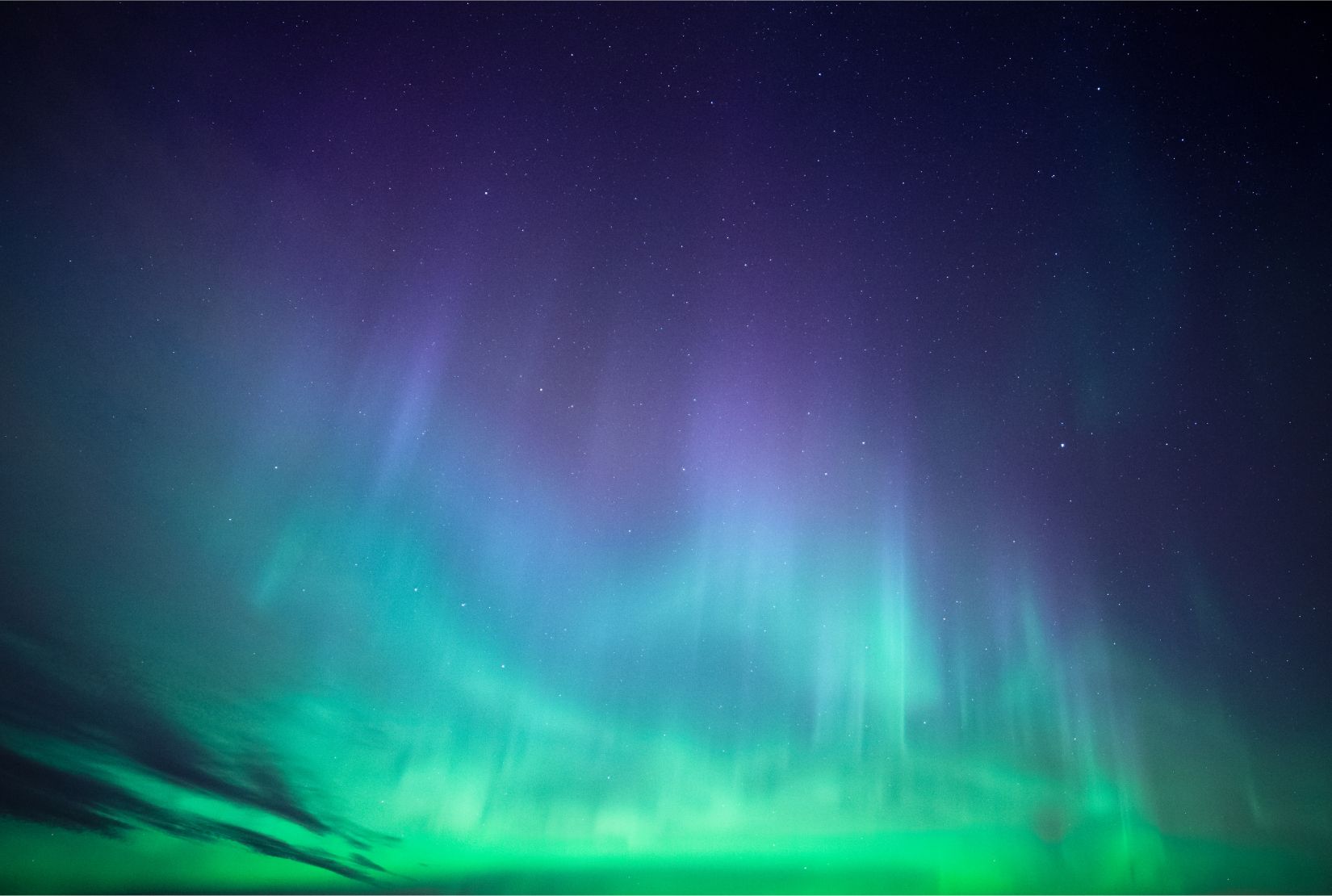Is seeing the world-famous Southern Lights phenomenon on your bucket list? The Aurora Australis—also called the Southern Lights—is the southern cousin of the Northern Lights. To witness this breathtaking spectacle, you would need to go as far south as Tasmania—but even then, the chance of seeing the Southern Lights is spotty at best, with only a 1-2% chance on any given night.
For those who want to ensure that they’ll see the Aurora’s spectacular light show, Rachel Williams of EO New Zealand has the solution. Rachel and her company, Viva Expeditions, created a service called Southern Lights by Flight. It flies guests from Christchurch, New Zealand down toward Antarctica and through the Auroral zone and back—all in one unforgettable night!
We asked Rachel about Southern Lights by Flight. Here’s what she shared:
Is it true that Southern Lights by Flight was your Covid pivot?
Yes. Pre-Covid, we specialised exclusively in travel to Latin America and Antarctica. The pandemic was a terrible time as all business ceased, followed by repatriation, refunds, redundancies and pretty much every cost-cutting thing we could do other than complete hibernation. We needed to do something to generate revenue until international travel resumed and Southern Lights by Flight was our solution. Not only have we filled the gap, we have also created a quality sustainable product that will continue into the future.
Is your company the only one offering this unique opportunity?
We created the service and are the only ones running it in New Zealand. I reached out to an astronomer who I knew had organised a similar experience for his friends and followers but it had never been commercialised. I asked him to help me, and he agreed. So we went to the airline, chartered the plane, and brought our own astronomy team onboard to assist the pilots with navigation.
Our business partners in Australia subsequently launched similar flights. However ours is different in that:
- New Zealand is further south than Australia, so it takes us less time to reach the active Auroral zone, and we can stay there much longer. We have an exclusive contract with Air New Zealand, so replication is not possible at this time.
- The International Antarctic Centre is located next to the airport in Christchurch. We have enhanced our guests’ experience by including an inspiring pre-flight mission where people learn from astronomers and NASA educators about the Aurora and can join photography sessions prior to the flight. (See our guests’ in-flight photos in our Facebook Group.)
What challenges did you overcome around organizing flights to see the Aurora?
- We coordinated with Greenpeace—they worried about unnecessary burning of carbon—so we have a thorough carbon offsetting programme in place.
- We had some upset families of the Erabus disaster (when a plane full of New Zealanders crashed into Mt. Erabus in Antarctica 43 years ago). We don’t go to Antarctica but there was still a lot of push back.
- We have dealt with aircraft availability restrictions, rescheduling flights due to Covid lockdowns, and navigating constantly changing rules about gathering sizes, vaccination status, etc.
- We had to reschedule eight flights due to Covid lockdowns and have managed to get three away, with lots of people still waiting for upcoming flights.
- We have done it all with a team of four (we were 14 pre-Covid)
Though there are no safety issues around flying through the Aurora, we also manage things like:
- All cabin lights are turned off when in the Auroral zone, so we provide everyone with a red light torch that allows them to see without impacting their night vision.
- We have special permission to turn off the plane’s outside safety lights (wingtips and roof lights), but this is done on the basis that there are no other planes within 3,000km of us at the time of flying.
How are you increasing environmental awareness?
At our pre-flight mission at the Antarctic Centre, we do a great presentation about the environment and how important Antarctica is in environmental protection and the work being done by aerospace experts in the field. We find that people who have a passion for Antarctica are more likely to help protect it, so we aim to transform our guests into Antarctic ambassadors.
What does the total experience entail?
The flights itself is 10 hours, departing Christchurch at 7pm and returning to Christchurch at 5am. So basically it’s:
- 3pm – International Antarctic Centre pre-flight mission experience
- 5pm – Check-in and welcome drinks
- 7pm – Boarding
- Dinner on the plane before all lights are turned off and Aurora viewing begins
- Lots of fun throughout the night, approximately 6 hours of Aurora viewing
- 3am – The lights come on for breakfast
- 5am – The plane lands and everyone disembarks feeling tired but completely thrilled
What entrepreneurial lessons have you learned from this experience?
- To think outside the box.
- How to market with a zero dollar marketing budget.
- How important it is to look after yourself in order to run a successful business.
- How important relationships are, and why working collaboratively is often a better approach than straight out competition.
What’s next for you?
I’m going to Antarctica in November, so I released a MyEO trip to see who wanted to join me. I now have 66 EO members coming onboard—which is fabulous.
We have just launched a 2023 Epic Antarctica MyEO Event and will have two very special guests joining us: Professor Mike Stroud OBE, the first man to walk unsupported across Antarctica and the Right Honourable Sir John Key, former New Zealand prime minister and businessman.
Categories: BUSINESS GROWTH Entrepreneurial Journey Member Spotlight WOMEN ENTREPRENEURS

